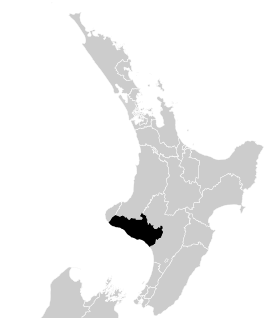Related Research Articles

Whanganui is a New Zealand parliamentary electorate. It was first established in 1860 for the 3rd Parliament and has existed continuously since then.
Grey Valley is a former parliamentary electorate in the West Coast region of New Zealand. The electorate was created for the 1871 general election as a single-member electorate, became a two-member electorate for the 1876 general election, and was split between the single-member electorates of Greymouth and Inangahua for the 1881 general election.
Caversham was a parliamentary electorate in the city of Dunedin in the Otago region of New Zealand, from 1866 to 1908.
Mongonui was a parliamentary electorate in the Far North District in the Northland region of New Zealand, from 1861 to 1870. It was represented by three Members of Parliament.
Waikouaiti was a parliamentary electorate in the Otago region of New Zealand, from 1866 to 1908.
Gladstone was a parliamentary electorate in the Canterbury region of New Zealand, from 1866 to 1890.
Mount Herbert was a former parliamentary electorate in the Canterbury region of New Zealand, from 1866 to 1870.
The Gold Fields District electorate was a 19th-century parliamentary electorate in the Otago region, New Zealand. It was created in 1862, with the first elections in the following year, and it returned two members. It was one of eventually three special interest constituencies created to meet the needs of gold miners. All three of these electorates were abolished in 1870. A unique feature of the Gold Fields District was that it was superimposed over other electorates, and voting was open to those who had held a mining license for some time. As such, suffrage was more relaxed than elsewhere in New Zealand, as voting was otherwise tied to property ownership. Another feature unique to the gold mining electorates was that no electoral rolls were prepared, but voting could be done upon showing a complying miner's license.
The Gold Field Towns electorate was a 19th-century parliamentary electorate in the Otago region of New Zealand. It was the second gold mining electorate in Otago, one of three special interest constituencies created to meet the needs of gold miners; the third electorate was located on the West Coast. The Gold Field Towns electorate was in 1865, with the first elections in the following year, and it returned one member. All three of these special interest electorates were abolished in 1870. A unique feature of the Gold Field Towns electorate was that it covered ten separate towns within the area of the Gold Fields, which in turn was overlaid of a number of general electorates in the Otago area. Voting was open to those who had held a mining license for some time. As such, suffrage was more relaxed than elsewhere in New Zealand, as voting was otherwise tied to property ownership. Another feature unique to the gold mining electorates was that no electoral rolls were prepared, but voting could be done upon showing a complying miner's license.
Pensioner Settlements was a 19th-century parliamentary multi-member electorate in the Auckland region of New Zealand, from 1853 to 1870.
Westland Boroughs was a parliamentary electorate in the West Coast of New Zealand from 1866 to 1870.
Westland North was a parliamentary electorate on the West Coast of New Zealand from 1868 to 1870.
Northern Division was a two-member parliamentary electorate in the Auckland Region, New Zealand from 1853 to 1870.
Riverton was a parliamentary electorate in the Southland region of New Zealand.
Hampden was a parliamentary electorate in the Otago region of New Zealand, from 1861 to 1870. The electorate was centred on the town of Hampden.
Christchurch West was a parliamentary electorate in the city of Christchurch, New Zealand from 1871 for the 5th Parliament, and it existed until 1875.
Picton was a parliamentary electorate in the Marlborough Region of New Zealand, from 1861 to 1887.
The 4th New Zealand Parliament was a term of the Parliament of New Zealand.
David Hunter Mervyn was a 19th-century Member of Parliament in the Otago region of New Zealand.
The 1867 Manuherikia by-election was a by-election held on 29 November 1864 in the Manuherikia electorate during the 4th New Zealand Parliament.